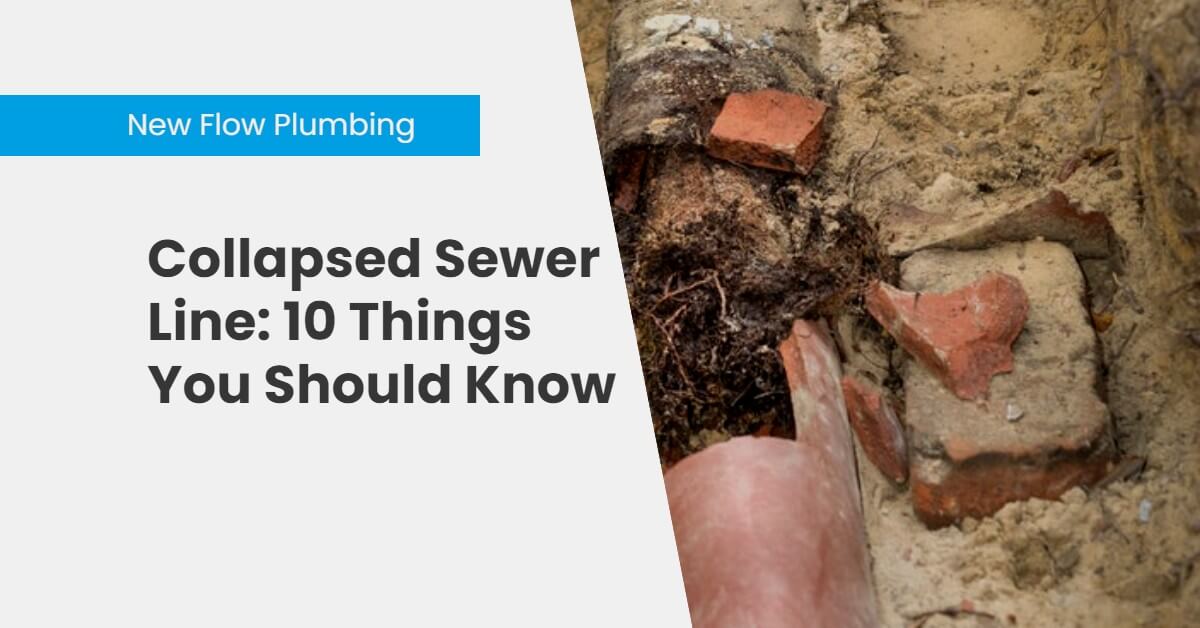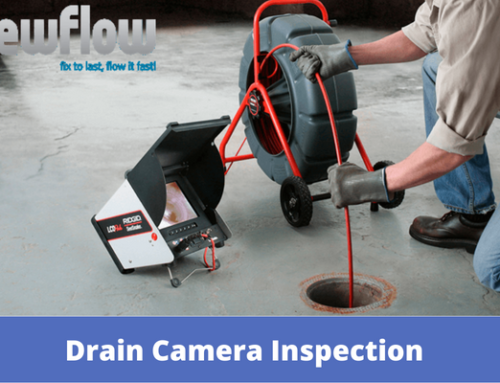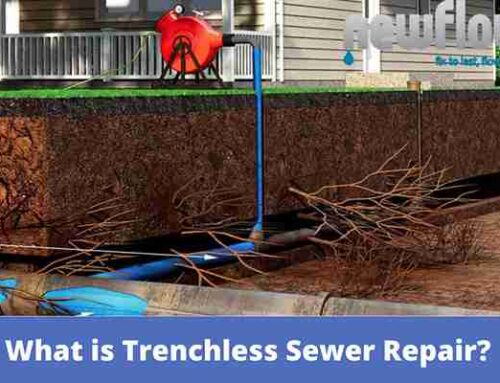Collapsed Sewer Line Guide: 10 Essential Insights to Protect Your Home
When a sewer line collapses, it can quickly turn into one of the most stressful problems a homeowner will ever face. A damaged pipe underground not only disrupts daily life but can also lead to messy backups, foul odors, and costly repairs. One of the most effective ways to handle this issue is through early detection and professional inspections, especially using a sewer camera. This method gives a clear picture of what’s happening underground and helps avoid unnecessary digging. By understanding the signs, causes, and solutions for a collapsed sewer line, you can protect your property and make smarter choices. In this guide, you’ll discover ten key insights that will help you recognize the warning signs, know what steps to take, and find long-term solutions. Keep reading—you’ll be equipped with practical knowledge that saves time, money, and stress.
1. What Is a Collapsed Sewer Line?
A collapsed sewer line happens when part of the pipe underground breaks, falls in on itself, or gets blocked by heavy soil and pressure. Unlike simple clogs that can be cleared with cleaning methods, a collapsed pipe means the structure of the pipe itself has failed. Wastewater cannot flow through properly, and this often causes sewage to back up into drains, sinks, or toilets.

This is a serious plumbing issue because it won’t fix itself. Once the pipe structure is compromised, water flow is restricted or completely blocked. Without proper repairs, damage spreads to surrounding areas, foundations, and even landscaping. Knowing what a collapsed sewer line is helps homeowners understand the importance of early action.

2. Warning Signs You Might Have a Collapsed Sewer Line
Early signs can save you from a major disaster. Here are the most common symptoms homeowners notice:
- Frequent clogs or slow drains in multiple fixtures at the same time
- Gurgling sounds coming from toilets or drains
- Strong sewage odors around sinks, tubs, or in the yard
- Sewage backups that reappear after temporary fixes
- Wet or sunken spots in the yard, even without rain
If you experience more than one of these issues, it’s time to consider that the problem may not be a minor blockage but a collapsed pipe underground.
3. Common Causes of a Collapsed Sewer Line
Understanding the causes can help you prevent future problems. The most frequent reasons sewer lines collapse include:
- Tree root intrusion: Roots grow into the pipe joints, cracking and breaking them.
- Old pipe materials: Clay, cast iron, or Orangeburg pipes weaken with time.
- Soil shifting: Ground movement from erosion, freezing, or heavy rain puts pressure on pipes.
- Construction damage: Digging or heavy equipment above the line can cause pipes to crack.
- Corrosion: Metal pipes eventually rust and deteriorate until they collapse.
Each cause requires a different approach to repair, so knowing the source of the issue is critical.
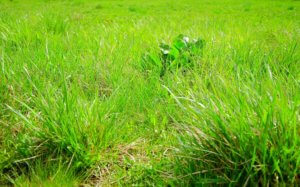
4. Why Sewer Camera Inspections Are the Best First Step
Among all solutions, a sewer camera inspection is one of the most reliable ways to find out if you have a collapsed sewer line. A small waterproof camera is sent through the pipe, giving a real-time video of the condition inside.
This method prevents unnecessary digging and shows exactly where the pipe has failed. It also identifies whether the problem is a full collapse, a partial blockage, or another issue such as root growth. Homeowners benefit by getting accurate answers quickly and saving money on guesswork repairs.
5. Short-Term Fixes vs. Long-Term Solutions
Temporary solutions like snaking or hydro jetting might provide relief if the collapse is partial, but they do not repair the pipe itself. In many cases, these short-term fixes only buy time.
Long-term solutions include:
- Trenchless pipe repair, where new liners or pipes are installed inside the old one
- Pipe bursting, where a new pipe replaces the old one without major digging
- Traditional excavation is used when trenchless methods are not possible
Choosing between these options depends on the extent of damage, pipe material, and location of the collapse.
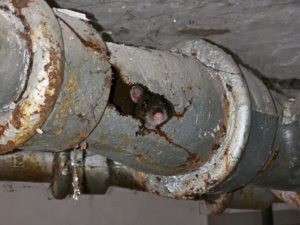
6. Costs Involved in Repairing a Collapsed Sewer Line
The cost of fixing a collapsed sewer line can vary widely. Factors that influence the price include:
- The repair method (trenchless vs. excavation)
- Length of pipe that needs replacing
- Depth and location of the sewer line
- Local labor and permit requirements
While excavation may be less expensive upfront, trenchless methods often save money in the long run by reducing property damage and landscaping costs.
7. Risks of Ignoring a Collapsed Sewer Line
Delaying action when you suspect a collapsed sewer line can have serious consequences:
- Property damage: Wastewater can seep into your foundation or basement.
- Health hazards: Exposure to sewage increases the risk of illness.
- Higher repair costs: The longer you wait, the more extensive the damage becomes.
- Environmental impact: Sewage leaks can contaminate soil and groundwater.
Taking immediate steps helps protect your home and avoids expensive emergencies.
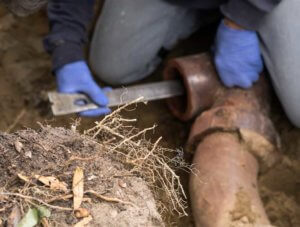
8. How to Choose the Right Repair Method
Not every repair fits every situation. Choosing the right solution depends on several factors:
- Pipe material and age
- Size of the collapse
- Accessibility of the sewer line
- Budget and time constraints
A camera inspection will guide this decision. Trenchless methods are usually preferred for their speed and minimal disruption, while excavation is reserved for severe cases.
9. Preventing Future Collapsed Sewer Lines
Prevention is always cheaper and easier than repair. Homeowners can reduce their risks by:
- Scheduling regular sewer inspections every few years
- Avoid planting large trees near sewer lines
- Monitoring water pressure and drainage patterns
- Acting quickly on early warning signs
Maintenance today helps avoid full collapses tomorrow.
10. Peace of Mind Comes From Being Prepared
While dealing with a collapsed sewer line is never pleasant, knowing what to expect makes the process less stressful. By recognizing the signs, understanding repair options, and investing in preventive maintenance, homeowners can stay in control of their property’s plumbing system.
Preparedness gives peace of mind. Instead of being caught off guard, you’ll be ready to take quick action, protect your investment, and keep your household running smoothly.
Conclusion
A collapsed sewer line is a problem no homeowner wants to face, but it is a reality that many eventually encounter. With the right knowledge, you can spot warning signs early, understand the underlying causes, and take action before the situation escalates. Sewer camera inspections, in particular, are one of the most effective ways to diagnose and solve the problem with precision.
By following the insights in this collapsed sewer line guide, you’ll be better equipped to protect your home, avoid unnecessary expenses, and ensure your family’s health and safety. The key is not just fixing the issue but also preventing it from happening again.
FAQs

Arman Grigoryan
Founder & President of New Flow Plumbing
Arman Grigoryan is the founder and president of New Flow Plumbing, proudly serving Los Angeles, Sacramento, and surrounding areas. With extensive experience in plumbing diagnostics, he leads a skilled team specializing in advanced sewer and drain camera inspections to quickly identify problems and deliver lasting solutions. Arman is dedicated to using the latest technology to provide reliable service, honest answers, and dependable results for every customer.

